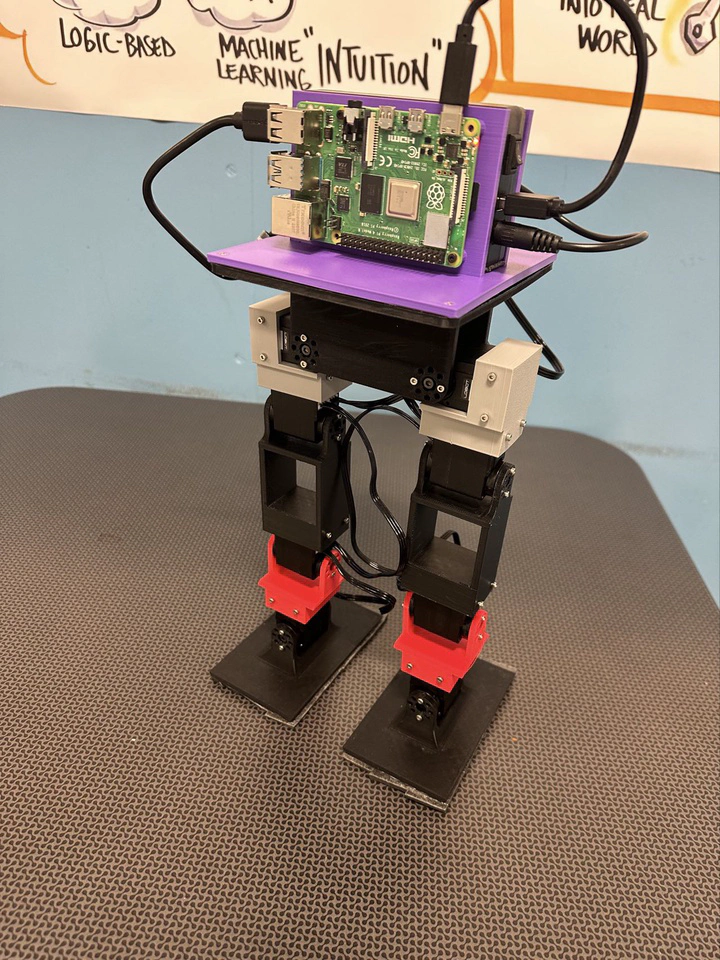Serial-structured bipedal robot
May 5, 2024· ·
1 min read
·
1 min read
Jialong Ning
 Image credit:
Image credit:Overview
- We needed to independently design a robot capable of walking without wheels. I decided to create a bipedal robot to simulate human walking.
- I started by sketching the robot’s basic shape, then developed a CAD model and used 3D printing to fabricate one of the robot’s legs.
- Using a Raspberry Pi, I tested basic code functionality and electronic wiring to ensure the system operated correctly.
- I then assembled the full robot and programmed it to perform simple walking movements, conducting initial gait tests.
- I used MuJoCo as the simulation platform and created a custom simulation environment based on the gymnasium library. Meanwhile, I utilized the PPO algorithm from stable_baselines3 to train the model, enhancing the bipedal robot’s walking ability by continuously modifying the reward function.
- I iteratively upgraded the robot’s mechanical structure, increasing each leg’s degrees of freedom to improve its walking ability. Initially, I applied the hill-climbing algorithm to find motor control parameters for stable walking, but since control relied on sine functions, this approach had limitations.
- I then implemented reinforcement learning to identify optimal actions to maximize walking speed. Due to the high computational demand and long training times, I only found some suboptimal actions.
- Here is a video of the complete process for the project.